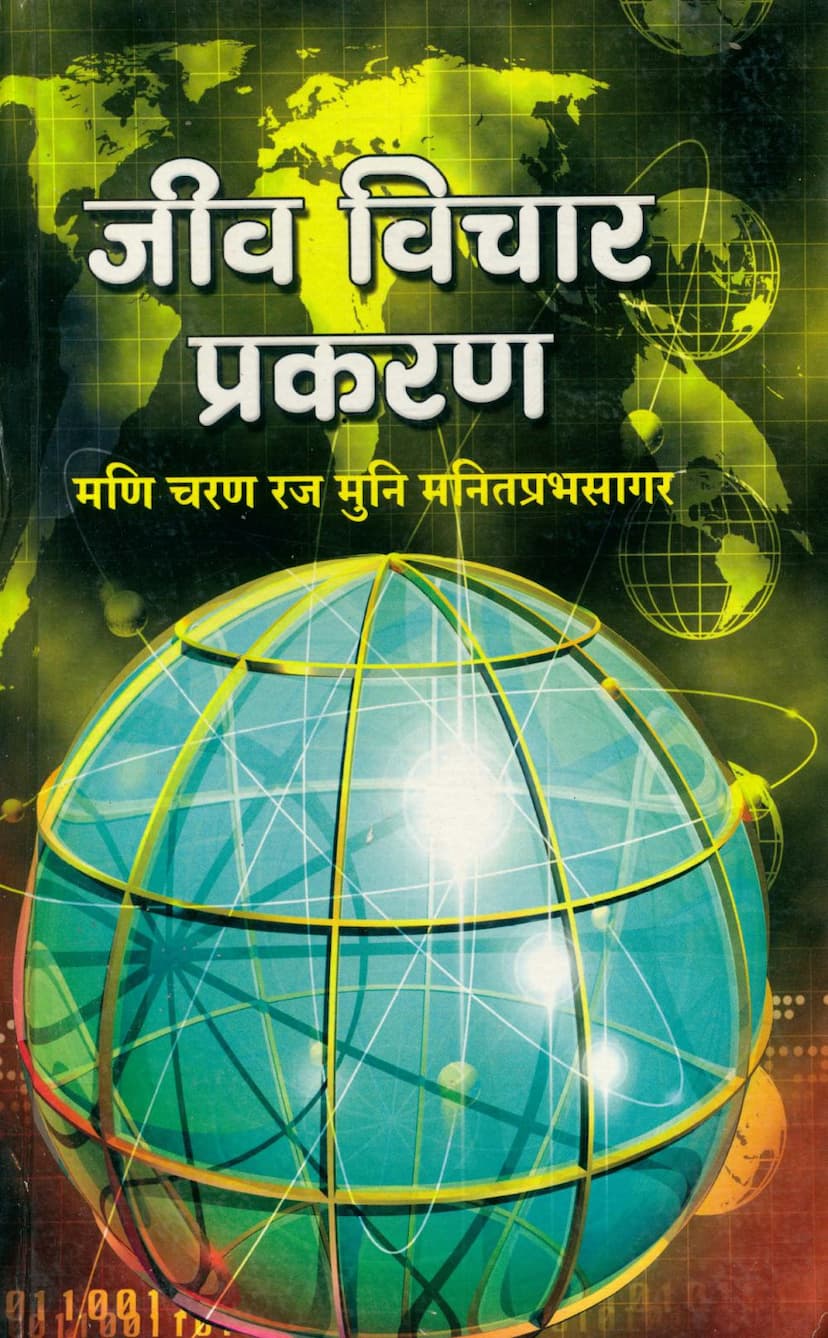Jeev Vichar Prakaran
Added to library: September 2, 2025

Summary
Here's a comprehensive summary of the Jain text "Jeev Vichar Prakaran" by Muni Manitprabhsagar, based on the provided text:
Title: Jeev Vichar Prakaran (A Treatise on the Soul) Author: Muni Manitprabhsagar Publisher: Muni Manitprabhsagar Original Work: Written by Vadivetala Shantisurishwarji M.S. (with commentary and question-answer sections by Muni Manitprabhsagar)
Core Subject Matter:
The book is a detailed exploration of the Jain concept of Jeev (soul or living being), its nature, classifications, and the journey of the soul through different states of existence. It aims to provide a clear and comprehensive understanding of the soul, which is considered the central element in Jain philosophy.
Key Themes and Content:
-
The Primacy of the Soul (Jeev): The text emphasizes that understanding the soul is paramount to understanding the universe and the ultimate reality (Paramaatma). Without comprehending the soul's true nature, one remains in ignorance and aimless wandering. The entire universe is fundamentally composed of two elements: Jeev (soul) and Ajeev (non-soul). The nine tattvas (principles) are expansions of these two.
-
The Author's Approach: Muni Manitprabhsagar has compiled and elaborated upon the original work, aiming to make it a complete resource. The book, despite being based on 51 verses, extends to over 275 pages, incorporating discussions on Navatattva (Nine Principles) and Karmagrantha (Texts on Karma). The author's goal was to leave no stone unturned regarding Jeev-related topics.
-
Detailed Classification of Souls: A significant portion of the book is dedicated to the exhaustive classification of souls based on various criteria:
- States of Existence: Samsari (worldly) and Mukta (liberated) souls.
- Indriyas (Sense Organs): Ekendriya (one-sensed), Dvi-indriya (two-sensed), Tri-indriya (three-sensed), Chautur-indriya (four-sensed), and Panch-indriya (five-sensed) souls.
- Strivers (Stationary) vs. Tras (Mobile) Souls: Detailed classifications of the five types of stationary souls (Prithvi-kaya, Ap-kaya, Teu-kaya, Vayu-kaya, Vanaspati-kaya) and the four types of mobile souls (Narak, Tiryanch, Manushya, Dev).
- Subtle vs. Gross Souls: The distinction between Sukshma (subtle) and Badar (gross) souls is explained.
- Origin: Garbhaj (born from a womb) and Sammurichim (spontaneously generated) souls, as well as Aupapatika (celestial birth).
- Paryapti and Aparyapti: Souls are categorized based on whether they have attained their full developmental capabilities (Paryapti) or are in the process (Aparyapti).
- Devas (Celestials): Detailed breakdown of different classes of celestial beings: Bhavanapati, Vyantar, Jyotishka, and Vaimanika (further divided into Kalpopapanna and Kalpatit).
- Naraka (Hell Beings): Descriptions of the seven hells, the types of hellish beings, and their suffering.
- Tiriyanch (Fauna/Lower Beings): Classifications of Jalchar (aquatic), Sthalchar (terrestrial), and Khechar (aerial) beings.
- Manushya (Humans): Classifications based on Karmabhumi, Akarmabhumi, and Antardveep origin, and their respective sub-classifications.
- Siddhas (Liberated Souls): Their nature and characteristics, including their freedom from body, karma, senses, and worldly existence, and their eternal blissful state.
-
The Five Doors of Analysis (Panch Dwar): The book systematically analyzes these soul classifications through five analytical frameworks:
- Body (Sharir/Avgahana): Discusses the physical dimensions (height) of different types of beings.
- Lifespan (Aayushya): Details the minimum (Jaghanya) and maximum (Utkrushta) lifespans of various beings.
- Self-Body Continuum (Swakay Sthiti): Explains how many times a soul might repeatedly take the same type of body or exist within the same realm.
- Prana (Life-Forces): Enumerates the ten life-forces and how many are present in different categories of souls.
- Yoni (Origin/Womb): Details the various origin points or types of births for different souls.
-
Commentary and Question-Answer Format: Muni Manitprabhsagar has provided extensive commentary (Arth-vivechan) and a detailed question-and-answer section (Jeev Vichar Prashnottari) at the end. This makes the complex philosophical concepts accessible to a wider audience. The question-and-answer section is particularly comprehensive, covering over 900 questions.
-
Emphasis on Ahimsa (Non-Violence): The understanding of Jeev is directly linked to the practice of Ahimsa. By knowing the different forms of life and their experiences, one can develop compassion and adhere to the principle of non-violence more effectively.
-
Dedication and Inspiration: The book is dedicated to Lord Mahavir, referred to as the "lamp of the universe." The author highlights the inspiration received from his spiritual guide, Upadhyay Shri Manitprabhsagarji M.S., and the extensive support from other revered monks and nuns.
-
The author's (Muni Manitprabhsagar's) dedication and skill are praised by his spiritual elders for producing such a profound and comprehensive work in a relatively short period.
Significance:
"Jeev Vichar Prakaran" serves as a foundational text for understanding the fundamental principles of Jainism concerning the soul. Its detailed classifications, coupled with the accessible commentary and question-answer format, make it an invaluable resource for Jain scholars, sadhakas (spiritual aspirants), and lay followers seeking to deepen their knowledge of Jain philosophy and practice. The book is presented as a key to unlocking the deeper aspects of Tattvajnana (Reality Knowledge).